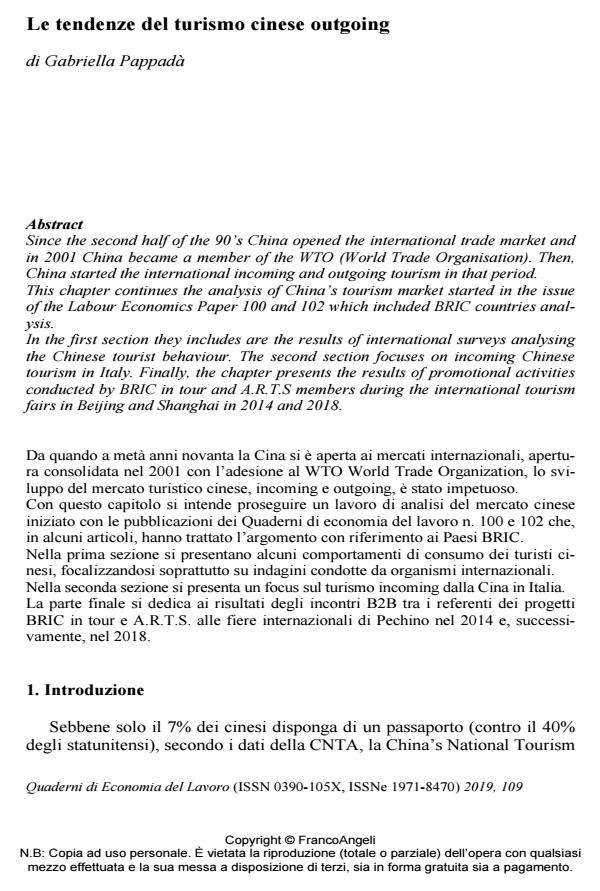Le tendenze del turismo cinese outgoing
Journal title QUADERNI DI ECONOMIA DEL LAVORO
Author/s Gabriella Pappadà
Publishing Year 2020 Issue 2019/109
Language Italian Pages 18 P. 59-76 File size 184 KB
DOI 10.3280/QUA2019-109005
DOI is like a bar code for intellectual property: to have more infomation
click here
Below, you can see the article first page
If you want to buy this article in PDF format, you can do it, following the instructions to buy download credits

FrancoAngeli is member of Publishers International Linking Association, Inc (PILA), a not-for-profit association which run the CrossRef service enabling links to and from online scholarly content.
Since the second half of the 90’s China opened the international trade market and in 2001 China became a member of the WTO (World Trade Organisation). Then, China started the international incoming and outgoing tourism in that period. This chapter continues the analysis of China’s tourism market started in the issue of the Labour Economics Paper 100 and 102 which included BRIC countries analysis. In the first section they includes are the results of international surveys analysing the Chinese tourist behaviour. The second section focuses on incoming Chinese tourism in Italy. Finally, the chapter presents the results of promotional activities conducted by BRIC in tour and A.R.T.S members during the international tourism fairs in Beijing and Shanghai in 2014 and 2018
Gabriella Pappadà, Le tendenze del turismo cinese outgoing in "QUADERNI DI ECONOMIA DEL LAVORO" 109/2019, pp 59-76, DOI: 10.3280/QUA2019-109005